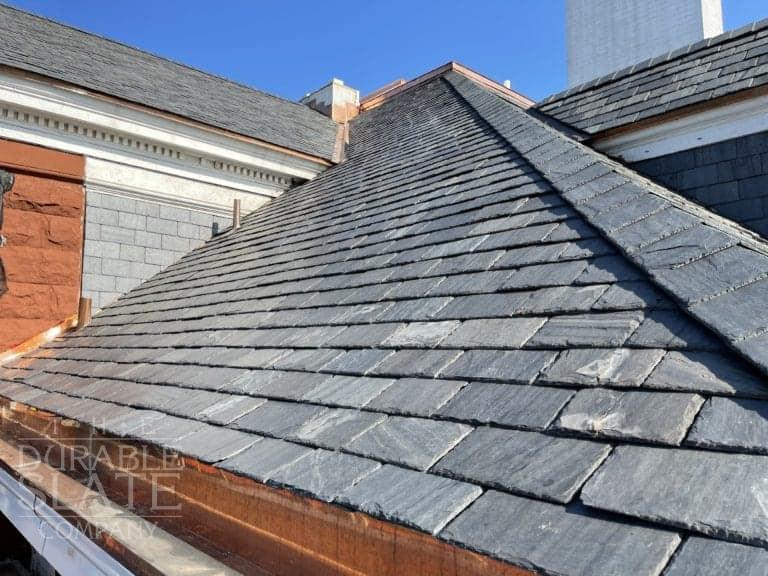A Comprehensive Check Out Roofing Companies Gainesville Locals Recommend
A Comprehensive Check Out Roofing Companies Gainesville Locals Recommend
Blog Article
Ideal Practices for Ensuring Proper Roof Covering Ventilation
A well balanced intake and exhaust air vent ratio, generally 1:300, plays a critical function, with consumption vents preferably placed at the lower side of the roof covering for awesome air entry and exhaust vents at the top for warm air exit. Maintaining insulation away from vents is critical to avoid air movement limitation.
Understand Ventilation Essentials
Properly recognizing ventilation essentials is necessary for guaranteeing the longevity and effectiveness of roof. Reliable air flow mitigates wetness accumulation and temperature extremes in the attic, both of which can bring about considerable structural damage in time. A well-ventilated roof covering aids in protecting against typical issues such as mold and mildew growth, wood rot, and ice dams, which can endanger the stability of the roof covering materials and the underlying structures.
The main objective of ventilation is to facilitate the movement of air, permitting a constant exchange between the outside and indoor environments. This balance is achieved with a mix of consumption and exhaust vents that interact to maintain ideal airflow. Intake vents, commonly situated along the eaves or soffits, enable fresh air to enter the attic room, while exhaust vents, frequently located at or near the roofing system ridge, make it possible for warm, moist air to get away.
Trick aspects influencing the efficiency of roofing system ventilation include appropriate positioning, ample sizing, and making sure that both consumption and exhaust vents are unblocked. Regular inspection and maintenance are important to identify potential blockages, damage, or inadequacies in the air flow system, thereby protecting the roof covering's efficiency and sturdiness.
Types of Roof Covering Vents
Roofing vents play a critical duty in keeping efficient attic room air flow and, by extension, the overall wellness of the roofing system. Different kinds of roof vents are available, each with one-of-a-kind advantages customized to certain roofing requirements. Ridge vents, as an example, are set up along the roofing's peak, enabling warm, damp air to escape from the attic. They offer constant air flow and mix perfectly with the roofline, making them both efficient and aesthetically pleasing.

Soffit vents are installed under the eaves and operate in tandem with roofing system vents to make certain a balanced consumption and exhaust system. By allowing cooler air to get in from below, soffit vents facilitate the expulsion of hot air through top vents. Gable vents, located on the exterior wall surfaces of the attic, offer an additional reliable service, specifically in homes with saddleback roofs.
Assess Your Present Air Flow

Following, think about the age and condition of your roof covering products and ventilation components. Older systems may not conform with present building ordinance or may have worn away gradually, reducing their performance. Conduct a comprehensive exam to determine any type of signs of deterioration, such as corrosion, damage, or spaces that can endanger the system's performance.
In addition, gauge the attic room temperature and moisture degrees. Heats and humidity can show insufficient ventilation - roofing companies. Utilize a hygrometer and thermometer to obtain exact readings, comparing them with exterior problems. Persistent disparities suggest possible problems that need attending to.
Installment Best Practices
Effective installment of roof air flow systems is vital for making certain optimal efficiency and long life. Proper installation begins with comprehending the details air flow needs of the roofing and the structure it covers. This involves calculating the appropriate proportion of consumption to tire vents, generally adhering to the 1:300 regulation, which stipulates one square foot of ventilation for each 300 square feet of attic room floor space.

The placement of vents is similarly critical. Consumption vents need to be installed at the roofing system's lower edge, often in the soffits, to allow great air to go into. Exhaust vents, on the other hand, should be mounted near or at the roofing system's height to help with the leave of cozy, damp air. This produces a natural airflow that helps keep temperature and moisture look what i found balance within the attic room area.
Seal all vent links meticulously to stop air leakages and potential water seepage. Usage top notch materials and comply with maker standards to guarantee click this site durability and performance. Additionally, integrating ridge vents with baffles can significantly enhance air movement efficiency by avoiding wind-driven rain and snow from going into the attic.
Ultimately, exact setup of roof covering ventilation systems reduces potential problems such as mold and mildew growth, ice dams, and structural damage, ensuring the roof covering's honesty and the building's general health.
Normal Maintenance Tips
Consistency in upkeep practices is essential to guaranteeing the lasting performance of roof air flow systems. Normal assessments are crucial, ideally done biannually-- in the spring and loss. During these assessments, make certain that vents are without particles, nests, and other blockages that might hinder air movement. Look for any kind of indications of wetness accumulation or mold and mildew, as these can show incorrect air flow or leaks (gainesville roofing companies).
Utilize a soft brush or a vacuum cleaner to get rid of dirt and debris from consumption and exhaust vents. Be careful not to damage the vent screens or louvers during the procedure.
Proper insulation is similarly essential. Guarantee that attic insulation does not obstruct the vents, as this can drastically limit airflow. Rearrange or change it to preserve an efficient obstacle. if any kind of insulation has shifted or resolved.
Finally, replace any kind of harmed or missing out on parts quickly. Damaged vents, broken shingles, or tatty blinking can all contribute to insufficient air flow and should be addressed immediately. Regular maintenance makes sure that the roof covering air flow system works ideally, thereby expanding the life expectancy of the roof important site covering itself.
Final Thought
Making sure correct roof air flow is extremely important for maintaining the effectiveness and longevity of a roof. Adherence to the 1:300 intake and exhaust air vent ratio, coupled with the calculated positioning of vents, is essential. Normal semiannual examinations, particles cleansing, and ensuring insulation does not block air flow are critical practices. Carrying out these ideal practices will cultivate a well-ventilated roof, thereby reducing potential concerns connected to moisture accumulation and too much heat, inevitably lengthening the roof's lifespan.
A balanced intake and exhaust vent proportion, frequently 1:300, plays an essential function, with intake vents preferably put at the lower side of the roof covering for cool air entry and exhaust vents at the peak for cozy air departure. Intake vents, typically situated along the soffits or eaves, enable fresh air to get in the attic room, while exhaust vents, often located at or near the roofing ridge, enable hot, damp air to run away.
Soffit vents are installed under the eaves and job in tandem with roofing vents to guarantee a well balanced intake and exhaust system. By enabling cooler air to go into from below, soffit vents facilitate the expulsion of warm air through top vents. Adherence to the 1:300 consumption and exhaust air vent proportion, coupled with the tactical placement of vents, is important.
Report this page